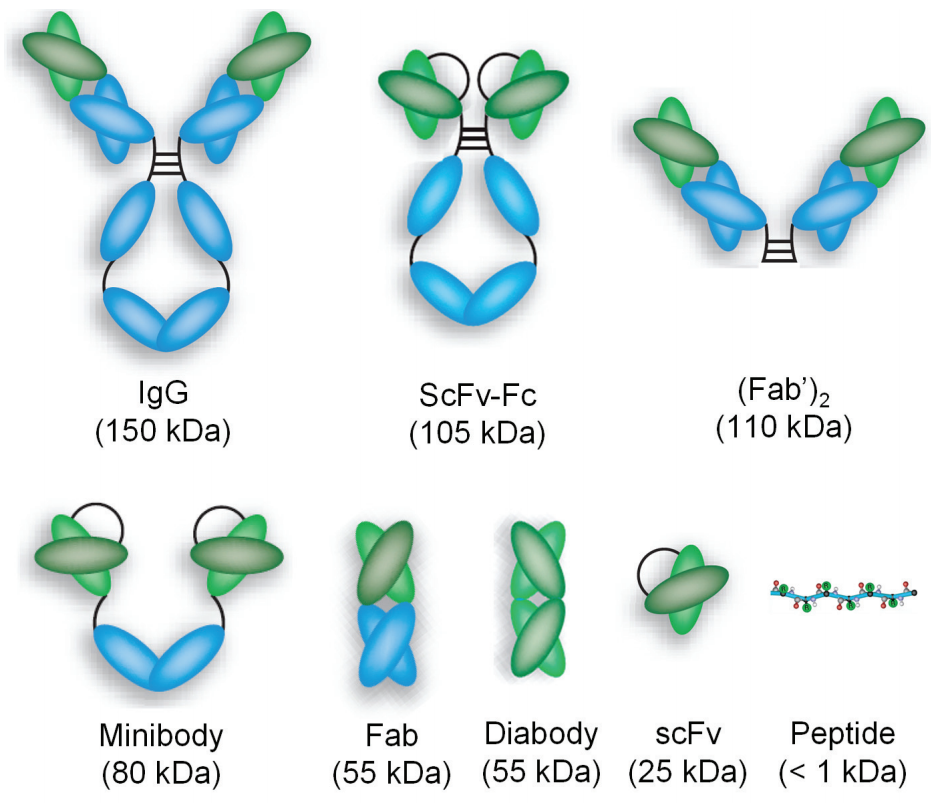Rotarix Oral Vaccine
- I. Introduction to Rotarix Oral Vaccine
- II. Composition of Rotarix Oral Vaccine
- IV. Uses of Rotarix Oral Vaccine
- V. Off-Label Uses of Rotarix Oral Vaccine
- VI. Dosage and Administration of Rotarix
- VII. Rotarix side effects
- VIII. Severe and Rare Side Effects of Rotarix Oral Vaccine
- IX. Interaction of Rotarix with Other Vaccines or Medications
- X. Warnings and Contraindications for Rotarix Oral Vaccine
- XI. Important Precautions Before Rotarix Administration
- XII. Administration to Special Populations
- XIII. Overdosage of Rotarix Oral Vaccine
- XIV. Storage and Handling of Rotarix Oral Vaccine
- XV. Careful Administration and Handling Precautions
I. Introduction to Rotarix Oral Vaccine
Overview of Rotarix vaccine
Rotarix is a vaccine created to fight against rotavirus infections that often result in diarrhea in babies and young children. This weakened live vaccine is taken by mouth to guard against rotavirus-induced gastroenteritis, which might cause dehydration, hospitalization, or even death in some instances.
Purpose and importance of Rotarix
Rotarix is mainly designed to offer protection against rotavirus infection and decrease the chances of sickness significantly. Given how rotavirus can spread in places like childcare centers due to its contagiousness, it's crucial to emphasize the importance of Rotarix in preventing such outbreaks. Early immunization of children not only helps reduce the risks associated with rotavirus but also plays a role in limiting its further spread within communities.
Global recommendations for rotavirus immunization
The World Health Organization (WHO) and other health bodies suggest incorporating the Rotarix vaccine into regular immunization plans in countries implementing comprehensive vaccination programs. This would significantly reduce hospital admissions and deaths associated with the rotavirus.
II. Composition of Rotarix Oral Vaccine
Active ingredients in Rotarix
Rotarix includes a weakened form of the human rotavirus strain RIX4414 that is derived from an existing strain of the virus. This weakened version helps the body build immunity without causing the disease itself.

Inactive components and excipients
The components that are not active in Rotarix consist of stabilizers and preservatives, such as sucrose and sorbitol, to maintain the effectiveness and shelf life of the vaccine. Also included are additives, like Dulbeccos Modified Eagle Medium (DMEM), that help maintain the virus's viability.
Mechanism of action of key ingredients
Once Rotarix is given to a person's body, it prompts the system to create antibodies that fight off the virus without causing harm to the individual in case of future infections.

Norovirus vs rotavirus
Both rotavirus and norovirus are types of stomach and intestinal infections that lead to inflammation in your system; however, they are illnesses caused by separate viruses with differing effects. Rotavirus primarily impacts children whereas norovirus can affect individuals of any age group.
Rotavirus prevention mechanism
Rotarix functions by introducing a version of the rotavirus into the system to signal the immune system to identify and fight against the harmful agent efficiently. If the person who has been vaccinated encounters the virus in life their immune system quickly responds to deactivate it thus averting sickness.
Immune response triggered by Rotarix
The vaccine triggers responses from both the body's system and cells that produce antibodies, neutralizing the virus proteins and stopping them from multiplying in the gut.
Duration of immunity provided by the vaccine
Research shows that Rotarix can provide lasting immunity during the years of life when there is a risk of rotavirus infection without the need for additional booster doses after the initial vaccination regimen.
IV. Uses of Rotarix Oral Vaccine
Primary use: Prevention of rotavirus gastroenteritis in infants and young children

Recommended age groups for vaccination
Babies aged six weeks to six months are the focus for receiving the Rotarix vaccine, which is given in two doses with a gap of at least four weeks between each dose.
WHO recommendations and national immunization schedules
The World Health Organization recommends that all nations include the rotavirus vaccine in their immunization plans in areas where diarrhea-related deaths are common. It is common for many countries to adhere to this suggestion by including Rotarix, in their childhood vaccination routines.
V. Off-Label Uses of Rotarix Oral Vaccine
Investigation of potential off-label uses
Although Rotarix is certified for infant use per regulations, current research is investigating its applicability to groups like older children or adults who are highly susceptible to rotavirus infections.
Research on immunization in older children or adults
Certain research is looking into how effective Rotarix is at vaccinating kids and adults in areas where rotavirus is widespread among community members, even though it's not typically done that way; these alternative uses could offer an extra safeguard in places with a high-risk level.
Experimental uses in immunocompromised populations
Studies are currently being conducted to examine the safety of Rotarix in people with weakened systems like those with HIV infection well. The purpose of these trials is to assess if altered forms of the vaccine can be safely given to individuals, with compromised systems.
VI. Dosage and Administration of Rotarix
Rotarix vaccine schedule
Rotarix is typically given orally twice; the initial dose is provided at six weeks old. The subsequent dose is scheduled between four to eight weeks later for each to be effective since they contain a quantity of weakened live rotavirus strain, in each dose.
Proper administration guidelines (oral route)
The vaccine is administered by mouth without needing needles; babies must ingest it to ensure it travels to the system where the immune response begins.

Timing of doses and complete immunization schedule
For protection against diseases like Rotarix, vaccines should be given twice in the first six months of a baby's life: the initial dose should be given around six weeks old, and the second dose between ten and fourteen weeks later.
Missed dose instructions
If a baby misses a dose, it should be given as soon as possible, but it is important to make sure both doses are completed before the child turns 24 weeks old, as the effectiveness decreases after this period of time.
VII. Rotarix side effects
Typical side effects after administration
Many babies handle Rotarix without any issues; however, a few might encounter side effects such as;
- Experiencing distress.
- Feeling expelling stomach contents.
- Feeling easily annoyed
Mild gastrointestinal symptoms (diarrhea, vomiting)
After getting the vaccine, a period of time passes, and after that, lots of mentions are made about some diarrhea and throwing up moments happening every so often in a brief manner, but it's usually okay because those things tend to go away on their own without needing any particular action taken.

Fever and irritability in infants
After getting vaccinated, babies might feel a bit cranky or have a fever, but these responses usually go away within a day or two.
Expected duration of side effects
Most side effects are mild and go away within one to two days. Parents should keep an eye out for any signs of discomfort in their child. However, it's uncommon for medical help to be necessary.
VIII. Severe and Rare Side Effects of Rotarix Oral Vaccine
Potential severe allergic reactions (anaphylaxis)
In some instances, serious allergic reactions such as anaphylaxis could happen. Signs and symptoms might entail; Having trouble catching my breath. Feeling puffiness in the face or throat. My heart raced quickly. Prompt medical aid should be sought if these signs manifest themselves.

Intussusception risks: signs, symptoms, and precautions
One of the significant adverse effects is intussusception, which is a form of bowel blockage and can be quite serious in nature. Symptoms include intense pain in the belly area, blood in the stool, and uncontrollable tears. If these signs show up in a child's health condition and suddenly get worse, go to the doctor since intussusception needs immediate medical care.

Other rare adverse events associated with Rotarix
Although very uncommon, negative effects can occur, such as temporary immune responses or digestive issues. Before getting vaccinated, it's important to let healthcare providers know about any vaccine reactions or existing medical conditions.
IX. Interaction of Rotarix with Other Vaccines or Medications
Simultaneous administration with other childhood vaccines
Rotarix can be safely administered alongside other routine childhood vaccines. This simultaneous administration is particularly convenient, allowing children to receive multiple vaccines in a single visit without the need for spacing them out. Vaccines commonly co-administered include the diphtheria, tetanus, and pertussis (DTP) vaccine, inactivated polio vaccine (IPV), and Haemophilus influenzae type B (Hib) vaccine. Studies show that Rotarix does not interfere with the immune response to these vaccines, ensuring comprehensive protection against several infectious diseases.
In cases where antiviral drugs are used alongside attenuated vaccines such as Rotarix for gastrointestinal viruses, treatment could potentially lower Rotarix's effectiveness by inhibiting the replication of the weakened virus strain in the vaccine itself.
Recommendations for co-administration with other treatments
Healthcare experts commonly advise against giving Rotarix with medications because they can decrease the bodys immune reaction and possibly lessen the vaccines effectiveness. Moreover people receiving blood products or immunoglobulins may have a response, to the vaccine and healthcare professionals usually delay vaccination, in situations.
X. Warnings and Contraindications for Rotarix Oral Vaccine
Situations where Rotarix should not be administered
Rotarix is typically safe for the majority of infants; however, there are scenarios where its administration is not recommended. For instance infants who have a documented allergy to any ingredient in the vaccine or those who have experienced responses, to a previous dose should refrain from receiving the vaccine.

Children with severe combined immunodeficiency (SCID)
Babies with a condition called severe combined immunodeficiency (SCID) should avoid getting the Rotarix vaccine due to the risk involved. SCID is a disorder that greatly affects the system, so using live vaccines, like Rotarix, can be risky as they might lead to infections instead of protection.
Allergy to any vaccine component
Having an allergy to any of the components in Rotarix is a contraindication. This includes preservatives or stabilizers, in the vaccine formula itself. Infants who have experienced anaphylaxis after doses of Rotarix should avoid getting doses of the vaccine.
Precaution in infants with gastrointestinal disorders
Infants who have had issues in the past need an evaluation, before getting Rotarix vaccine due, to the risk of intussusception. A condition where part of the intestine folds into another part leading to blockage. It's important to weigh the risks and benefits of administering Rotarix in these cases as there is a small chance of intussusception associated with the vaccine.
XI. Important Precautions Before Rotarix Administration
Screening for pre-existing conditions
Prior to giving Rotarix to infants, healthcare professionals should evaluate them for any existing conditions, including deficiencies, allergies, or gastrointestinal disorders. This evaluation is essential to ensure the administration of the vaccine and reduce the likelihood of reactions..
Reporting previous vaccine reactions
Parents and caregivers should make sure to let healthcare professionals know about any reactions to vaccines they may have experienced. This detail assists the healthcare provider in determining if it is safe to give Rotarix or if a different approach is needed.
Guidelines for administering to infants with mild illnesses
Rotarix is typically safe for infants with ailments like a cold as long as they don't show serious signs, such as a high fever or vomiting; however, if an infant is moderately or severely sick, the vaccination can be delayed until they have recuperated.

Monitoring after vaccine administration
Healthcare professionals often advise parents to keep an eye out for any reactions in babies after giving them Rotarix vaccine shots. Although severe reactions are occurrences it's crucial for parents to be alert for symptoms such, as fever, excessive fussiness or signs of stomach discomfort and consult a doctor if necessary.
XII. Administration to Special Populations
a. Administration to Elderly
Investigation into off-label use in elderly populations
While Rotarix is primarily intended for use in infants, the vaccine has also been explored for off-label application among the population. Older individuals with compromised systems could be at risk of gastrointestinal infections, although these studies are restricted in scope and necessitate additional research to validate their findings.
Limited research and findings
There isn't proof to suggest giving Rotarix to older adults. A lot more studies are needed to see if it might help this group of people. Those, in nursing homes or, with health issues.
b. Administration to Pregnant Women and Nursing Mothers
Safety of handling by pregnant women or nursing mothers
While Rotarix is not given to women specifically, healthcare professionals need to handle the vaccine around pregnant or nursing mothers as a safety measure to prevent any potential exposure to live virus particles that could carry theoretical risks even though the chances are low.
Considerations for rotavirus transmission prevention in infants
Expectant mothers and breastfeeding women should understand the significance of vaccinating their babies to prevent the spread of rotavirus infection. Even though pregnant women do not receive the vaccine themselves ensuring that their newborn babies receive it can greatly decrease the chances of illness, in infants.
c. Administration to Children
Safe age ranges for administration
Rotarix is designed for infants, as six weeks old and is usually given in two doses before the child turns 24 weeks old to ensure optimal effectiveness.
Efficacy in infants and toddlers
Rotarix has been very successful in stopping cases of rotavirus gastroenteritis in children and babies. It works well throughout the early years of a child's life and gives strong protection at a time when babies are most at risk of getting rotavirus infections.
Special considerations for preterm or low-birth-weight infants
Preemies and babies born underweight can get Rotarix without any worries; however, their vaccination timings might need to be tweaked according to how far along they were when they were supposed to be born (corrected age). The vaccine works well for these little ones and gives them the necessary shield against getting hospitalized due to rotavirus infections.
XIII. Overdosage of Rotarix Oral Vaccine
Symptoms of vaccine overdose
An excessive amount of Rotarix is uncommon due to the regulation of vaccine dosage administration. If an unintentional overdose happens typical symptoms may involve stomach issues, like diarrhea or vomiting. These signs are usually mild. Resolve themselves over time.
Recommended actions and medical management in case of overdose
In case of an infant overdose, healthcare experts usually suggest keeping an eye on the baby for any signs of trouble. They might offer care if needed. Specific antidotes or treatments are usually not required. If vomiting or diarrhea persists, medical professionals may provide fluids to prevent dehydration.
Monitoring and support following overdose incidents
If a baby gets Rotarix doses by mistake, it's important to watch them closely for a little while afterwards to make sure they're okay. Most of the time, there aren't any side effects. Doctors might suggest extra checkups just to be safe and make sure the baby stays healthy.
XIV. Storage and Handling of Rotarix Oral Vaccine
Proper storage conditions (temperature, protection from light)
Please store Rotarix somewhere between 2°C and 8°C (35°F and 46°F). Keeping it within this temperature range is vital to preserve its effectiveness, as exposure to temperatures like freezing can negatively impact the vaccine's potency. Also, remember to shield it from exposure.
Shelf life and expiration date management
Rotarix usually remains effective for two years if stored properly, so it's essential for healthcare providers to keep an eye on the expiration dates to make sure they use the vaccine before it expires.
Guidelines for handling the vaccine before administration
To ensure the baby's comfort during administration, it is essential to allow the vaccine to reach room temperature beforehand. Be cautious about preventing contamination and discarding any doses, as Rotarix does not have preservatives for dose vials.
XV. Careful Administration and Handling Precautions
Special handling guidelines for healthcare providers
Healthcare professionals need to follow guidelines to safeguard the effectiveness of the vaccine, such, as maintaining refrigeration and minimizing exposure to heat or light unnecessarily.
Avoiding cross-contamination during administration
Healthcare workers need to follow a procedure to avoid mixing contaminants while preparing and giving the vaccine dose.It is crucial to maintain hands and wear gloves to prevent any contact, between the vaccine and other surfaces or people.
Maintaining hygiene and proper disposal of vaccine materials
Healthcare professionals are required to dispose of any leftover Rotarix vaccine doses along, with syringes and related items following biohazard protocols to prevent exposure, to the live virus and maintain a safe and clean vaccination procedure.
Rotarix Oral Vaccine FAQ
- Why is rotarix given orally?
- Which is better rotarix or rotate?
- When is rotarix vaccine given?
- Rotarix when to give?
- What does rotarix prevent?
- What is rotarix used for?
- What does rotarix taste like?
- What is rotarix vaccine used for?
- What is rotarix vaccine for baby?
- What is rotarix vaccine?
- How to give rotarix vaccine?
- How is rotarix vaccine administered?
- How does rotarix work?
- Rotarix how to give?
- Rotarix how many doses?
- Can rotarix be given via ng tube?
- Can rotarix be given after 24 weeks?
- Can rotarix vaccine cause diarrhea?
- Can rotarix and rotateq be interchanged?
- Can rotarix be given after rotateq?
- Can rotarix be given after 6 months?
Why is rotarix given orally?
Rotavirus Vaccine Oral Solution (known as Rotarix): The rotavirus vaccine helps protect against the illness caused by rotavirus infection, which leads to symptoms, like fever and stomach upset in children, typically during winter and early spring months.The oral vaccine is administered by a healthcare provider directly into the mouth for protection.
Which is better rotarix or rotate?
Rotarix and RotaTequal are not the same. It's important for babies who get their dose of either vaccine to stick with the same one for the full vaccination series by mouth. Whether it's Rotarix or RotaTequal, they're equally effective, with no clear advantage of one over the other.
When is rotarix vaccine given?
Children should receive their initial vaccine dose before reaching 15 weeks of age, and all doses of the rotavirus vaccine should be completed before they reach 8 months old. Both vaccines should be administered through drops.
Rotarix when to give?
Both types of rotavirus vaccines are given by mouth through drops for infants.The vaccination schedule involves doses; RotaTeq® (RV5), for instance, is administered in three doses at 2 months, 4 months, and 6 months old, respectively, while Rotarix® (RV1) is given in two doses at 2 months and then at 4 months of age.
What does rotarix prevent?
The rotavirus vaccine helps to prevent the rotavirus infection that leads to symptoms like fever and gastrointestinal issues such as diarrhea and vomiting.
What is rotarix used for?
The rotavirus vaccine helps protect against rotavirus infection, which often leads to diarrhea in infants and young children. Symptoms, such as vomiting, fever, and dehydration, might require hospitalization and could be life-threatening.
What does rotarix taste like?
The oral rotavirus vaccine has a sweet flavor when administered.
What is rotarix vaccine used for?
Rotavirus Vaccine Oral Solution (Rotarix): The rotavirus vaccine helps prevent the infection caused by rotavirus, leading to symptoms like fever and diarrhea commonly found in children during winter and early spring seasons. The oral solution of this vaccine will be administered by a healthcare provider directly into your mouth.
What is rotarix vaccine for baby?
ROTARIX is a vaccine meant to protect against rotavirus gastroenteritis triggered by G type 7 and other non-G type (7A and 7B). It is given in two doses for infants aged between 6 weeks and 24 weeks.
What is rotarix vaccine?
The effective method to safeguard your child from rotavirus disease is administering the rotavirus vaccine.
How to give rotarix vaccine?
Position the baby in a seated posture. Gently direct the oral doser towards the inner cheek area before dispensing all of its contents into the infant's mouth.
How is rotarix vaccine administered?
Position the baby in a seated position. Gently guide the oral doser towards the inside of their cheek, then give them all the liquid from the doser in their mouth.
How does rotarix work?
Rotarix includes traces of rotavirus, a virus for gastroenteritis that is live yet weakened to prevent disease development and deemed appropriate for vaccination purposes.
Rotarix how to give?
Ensure the baby is sitting in a reclined position, then gently guide the doser towards the inside of the cheek. Give them all the liquid in it.
Rotarix how many doses?
Rotarix, a vaccine, is administered in two doses when infants reach 2 months and 4 months of age.
Can rotarix be given via ng tube?
Rotarix can be administered if the nasogastric tube is in place for another purpose.
Can rotarix be given after 24 weeks?
ROTARIX is authorized for administration in babies between 6 weeks and 24 weeks old.
Can rotarix vaccine cause diarrhea?
While most infants receiving the rotavirus vaccine experience no issues, there are instances where some babies may exhibit side effects that typically resolve without intervention. These might include fussiness and temporary episodes of diarrhea or vomiting following a rotavirus vaccine administration.
Can rotarix and rotateq be interchanged?
Rotarix and RotaTeqs should not be swapped out for each other; it's essential, for babies who get their dose of either vaccine to stick with the oral rotavirus vaccine throughout the entire vaccination series without switching between the two products because there is no indication that one oral rotavirus vaccine is superior to the other, in terms of efficacy.
Can rotarix be given after rotateq?
Rotarix and RotaTe are not interchangeable; infants who receive a dose of either of these vaccines should finish the vaccination series with the same oral rotavirus vaccine.
Can rotarix be given after 6 months?
ROTARIX is authorized for administration in babies aged between 6 weeks and 24 weeks old.







